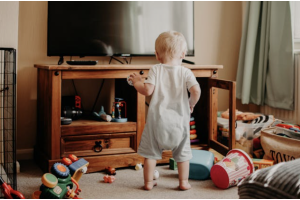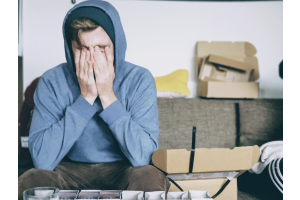Hidden Risks That Could Compromise Family Safety

A home is meant to offer comfort, protection, and peace. But beyond the cozy furnishings and familiar walls, there may be unseen hazards putting your family at risk. These dangers don’t always announce themselves with sirens or flashing lights. Often, they’re hidden in the background, quietly building up to something far more serious. Identifying and addressing these risks can mean the difference between everyday safety and a preventable crisis.
Overlooked Structural Damage
Many homeowners assume their property’s bones are solid unless something obvious happens, like a leak or a crack. But structural issues can begin subtly, showing signs like small drywall cracks, misaligned doors, or uneven floors. These may seem cosmetic, but can signal foundational shifts or water-related damage below the surface.
If left unattended, problems such as rotted beams, termite damage, or soil settling can make a home unsafe. Regular inspections by certified professionals can identify problems early, after events like storms, floods, or heavy snowfall. Spotting minor damage before it becomes a structural failure protects your household from injury and costly repairs.
Roofing Issues That Lead to Bigger Problems
A solid roof is your home’s first line of defense against weather and environmental exposure. Unfortunately, roof issues are often out of sight and out of mind until a major leak forms. Missing shingles, damaged flashing, and compromised underlayment are all culprits that can allow moisture into the home, leading to mold, rot, and insulation failure. The contractors at GreatStateRoofing.com and other reputable specialists recommend scheduling roof inspections annually in areas prone to high winds or heavy rain. Investing in timely roof repairs prevents cascading problems that compromise both structural safety and indoor air quality. Ignoring what’s above your head could soon lead to problems inside your walls.
Hidden Electrical Faults Behind the Walls
Electrical systems tend to go unnoticed until something goes wrong, like a spark, a blown fuse, or worse, a fire. According to the Electrical Safety Foundation International, home electrical fires cause approximately 500 deaths and over 1,400 injuries each year in the U.S. alone. These fires often stem from aged wiring, overused extension cords, or improper DIY fixes.
Warning signs include frequent circuit breaker trips, flickering lights, and discolored outlets. Homes built more than 30 years ago are particularly vulnerable if no recent updates have been made. Bringing in a licensed electrician to perform a thorough safety check can expose outdated components before they become emergencies.
Poor Indoor Air Quality and Its Health Effects
We often worry about pollution outside, but many homes suffer from compromised indoor air quality due to dust, allergens, mold spores, and chemical off-gassing from household products. Poor ventilation traps these irritants inside, leading to headaches, allergies, fatigue, or even respiratory illnesses.
One of the more serious concerns is radon, a naturally occurring radioactive gas that seeps into homes from the ground. The Environmental Protection Agency estimates that radon exposure is responsible for 21,000 lung cancer deaths per year. Simple test kits are available to measure radon levels and determine whether mitigation is necessary. Ensuring good airflow, using HEPA filters, and maintaining HVAC systems all contribute to a safer breathing environment at home.
Unsafe Storage and Household Chemicals
Many accidents happen not because a home is inherently dangerous, but because dangerous substances are stored within easy reach. Cleaning agents, insecticides, antifreeze, and even laundry pods can pose serious threats if accessed by children or pets. According to the American Association of Poison Control Centers, over 2 million poison exposure calls are made annually, with a significant portion involving children under six.
Improper storage in garages, kitchens, or bathrooms amplifies the risk. Cabinets should have child-proof locks, and hazardous materials should be stored high up or in locked compartments. Expired medications should be disposed of at take-back programs or designated facilities. Every household member should know what not to touch, eat, or mix in multi-generational homes with both elderly and young residents.
Cybersecurity Threats That Cross Into the Physical World
As digital devices multiply, so do the ways bad actors can breach your family’s privacy. It’s no longer just about hacked bank accounts or stolen credit card numbers. Poor cybersecurity practices can invite physical consequences. For instance, if a smart home system is compromised, burglars could disarm alarms or unlock doors without setting foot near a window.
Unsecured Wi-Fi networks, weak passwords, and oversharing on social media all present risks. Even seemingly innocent details, like vacation plans or photos showing home layouts, can be exploited by those with bad intentions. Teaching children about digital boundaries and setting up secure authentication for smart devices are important steps. A modern security system should protect both the front door and the digital gateway into your life.
Every family deserves to feel safe in their home, but true safety goes beyond locking doors and setting thermostats. From the attic to the foundation, and from your Wi-Fi to your medicine cabinet, hidden dangers can lurk anywhere. Prioritizing regular inspections, safe storage practices, and cybersecurity hygiene ensures that no aspect of your household is left vulnerable. These proactive steps not only protect your loved ones, they give you peace of mind that your home is truly secure.






